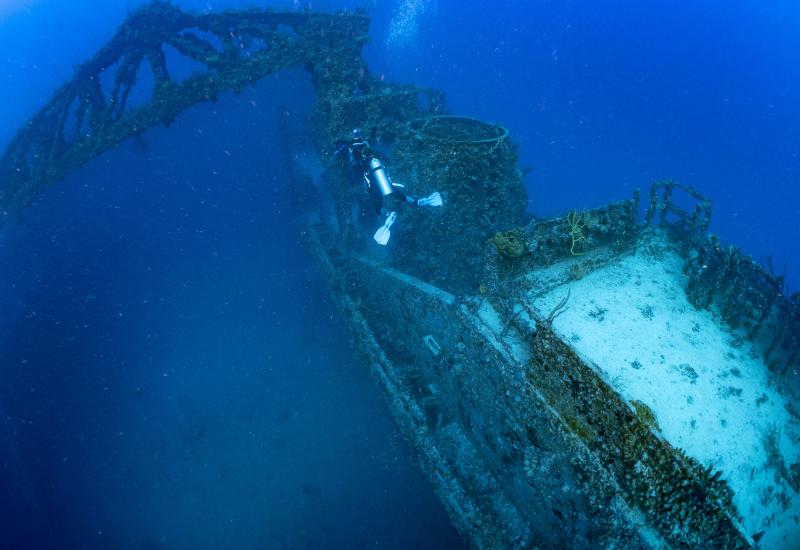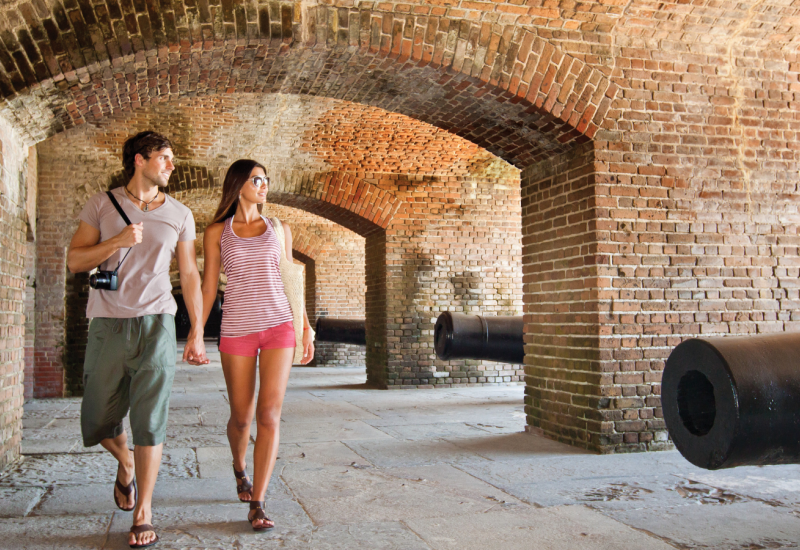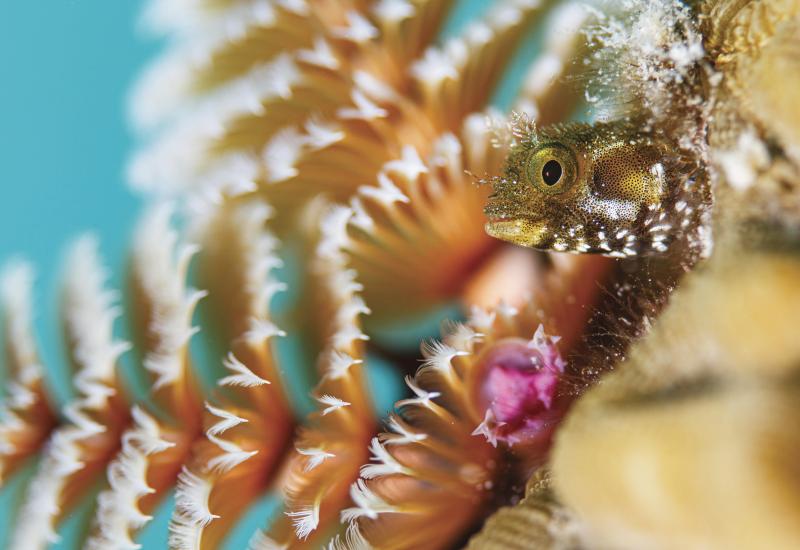The Florida Keys Interactive Destination Guide
| > The Florida Keys & Key West Where Caribbean-style reefs and world-famous shipwrecks come in red, white and azure blue.> By the editors & readers of Scuba Diving |
 |
UPPER KEYS | MIDDLE KEYS | LOWER KEYS
Destination Snapshot

Water Conditions: Diving is year-round. The best conditions are from May to September, with relatively calm seas and good vis--except during tropical storms and hurricanes. For the latest dive conditions, check the National Oceanic and Atmospheric Administration's (NOAA) buoy reports at http://www.ndbc.noaa.gov/.
Visibility: On clear days, visibility soars to 120 feet, but averages are closer to 60 to 80 feet. Winter storms can stir up chop, and along the shallow reefs visibility can drop to 30 feet or less, but when the storms pass, visibility can improve with just a couple of tidal shifts.
Water Temperatures: Range from the 70Fs in mid-winter to 80Fs in summer.
Reef Report: Two reef structures are found throughout the Keys. Shallow patch reefs start about one mile from shore and are dominated by sea fans and soft corals. Between three and eight miles offshore are the spur-and-groove formations of the fringing coral reef that draw most divers. Most of the commonly dived reef sites rarely exceed 40 feet in depth, with clusters of brain, star, pillar and elkhorn coral rising 10 to 15 feet from the bottom. Some deeper portions of the outer reef, however, feature mini-walls that drop off to 80 to 100 feet.
Marine Life: There are more than 600 varieties of fish in Keys waters. Many of the reefs are literally crawling with spiny lobster and crabs, and it's not uncommon for divers to encounter stingrays, nurse sharks and spotted and green moray eels.
The Upper Keys: Key Largo, Tavernier and Islamorada

On any road trip through the Keys, you'll hit the mother lode of diving not far south of Miami's urban sprawl. Key Largo, the largest island in the chain, claims to be the "Dive Capital of the World," and it's home to some of the most famous reefs in the United States--Elbow, Molasses, Carysfort and French reefs. The combination of proximity to the cleansing waters of the Gulf Stream and the mass of this island serve to obstruct the pass-through of the turbid waters of Florida Bay and ensure consistently stellar water clarity.
The Coast Guard Cutters Duane and Bibb, sunk off Key Largo in the late 1980s, also make Key Largo and neighboring Tavernier a premier wreck diving destination. The Upper Keys will become an even greater wreck diving destination with the addition of the 510-foot Spiegel Grove--one of the largest U.S. artificial reefs ever sunk solely for divers. As this issue went to press, a Virginia shipyard was still cleaning and preparing the ship. Watch for the arrival of this world-class wreck dive in December.
Plantation, Windley and the Matecumbe Keys are collectively called Islamorada, but are better known as the "Sportfishing Capital of the World." For the same reason anglers (mostly catch-and-release these days) revere Islamorada, sport divers do too--fish. Lots of fish. There's plenty of great diving on Alligator, Crocker and Davis reefs as well as the wreck of the Eagle freighter. Islamorada is also one of the best places to be for lobstering during the season, which runs from August to March.
Reader Comments
Key Largo
"Very good diving and you get your money's worth."
- N.S., Westfield, Mass., May '00.
"I thought the reef was beautiful and well-protected. There was a plethora of marine life on the reef."
- J.S., Orlando, Fla., Sept. '00.
Islamorada
"Islamorada is a great value for the dollar."
- A.B., Stow, Mass., March '00.
"They've got a little bit of everything. I especially like the wreck diving, but there is also a lot of good reef diving."
- E.W., Clearwater, Fla., July '00.
Middle Keys: Marathon

At Mile Marker #66, you hit a string of small islands culminating in Vaca Key, and the town of Marathon--the physical and operational center of the islands. It also happens to be a great jumping-off point for some excellent diving as well.
The reefs here are exposed to more of the nutrient-rich water that flows from the Gulf of Mexico, and the vis may suffer a little at times. But at high tide you can count on 50 to 60 feet of visibility. Much of the diving centers around Sombrero Reef, a hat-shaped dome topped by a light tower. You can also explore fingers of coral on Delta Shoals and Coffins Patch, interact with friendly nurse sharks at Samantha's Reef, and experience the ever-popular Thunderbolt shipwreck. The Sanctuary Preservation Areas throughout the Florida Keys offer some of the best marine life in this hemisphere, and off Marathon both Coffins Patch and Sombrero Reef are SPAs. If you haven't dived these reefs in a few years you'll be amazed at not only the sheer quantity of fish, but also how friendly they've become now that they are no longer in jeopardy from spearfishing or hook-and-line angling.
Reader Comments
Marathon
"Thumbs up! The diving was excellent and there were lots of big fish and lobster."
- R.R., Cleveland, Ohio, Aug. '00.
"Good diving for beginners, excellent photo opportunities and lots of fish."
- P.S., Dallas, Texas, June '00.
_"Marathon diving is the best-kept secret in the Florida Keys."
_ - M.B., Carroll, Ohio, July '00.
Lower Keys: Looe Key to Key West

Crossing the Seven Mile Bridge affords one of the most scenic vistas of the whole trip, and at its southern end, the bridge deposits you on Long Key. From here, you'll be island-hopping through the Torch Keys, Big Pine Key and onward to Key West. But slow down here, for there are some fascinating stops to make along the way, from viewing the rare and endangered Key deer to the immaculate reefs off Looe Key.
This protected five-square-mile reef is a series of well-defined coral grooves stocked with life from crabs to free-swimming morays to nurse sharks. Shipwreck enthusiasts will love the Adolphus Busch, Sr., a retired freighter that rests perfectly upright in just 100 feet of water. In the few years the Busch has been on the bottom, she has transformed from a derelict freighter to a virtual fish magnet, with massive schools of tomtate grunts, horse-eye jacks and barracuda. But the stars of this undersea circus are the three resident jewfish commonly sighted.
And finally, there is legendary Key West--where diving is almost as popular as any and all forms of sun-drenched hedonism. Key West has its own spur-and-groove reefs with abundant coral and plentiful marine life at sites like Nine-Foot Stake, Lost Reef, Western Dry Rocks and the Sambos (Eastern, Western and Middle). There are two prime shipwrecks in Key West: the Cayman Salvage Master, a 187-foot Coast Guard buoy tender sunk in April of 1985; and the 75-foot vessel dubbed Joe's Tug. Coming soon will be the Vandenberg, a 520-foot behemoth of a ship that will make a stunning artificial reef, eclipsing even Key Largo's massive Spiegel Grove by 10 feet.
Reader Comments
Looe Key
"Easy diving and great visibility. We enjoyed seeing lots of smaller sea life, as well as spotted eagle rays, tarpon, nurse sharks, gray reef sharks, two large southern stingrays and a jewfish."
- S.W., Southgate, Mich., July '00.
"Great diving for beginners. You can stay down for hours on one tank."
- R.F., Merrick, N.Y., July '00.
Key West
"I was pleasantly surprised at the abundance of marine life."
- C.P., Summit, N.J., Feb. '00.
"Great for shallow dives, and Key West is a blast topside."
- A.B., Aurora, Ill., July '00.
The Florida Keys & Key West Where Caribbean-style reefs and world-famous shipwrecks come in red, white and azure blue. By the editors & readers of Scuba Diving
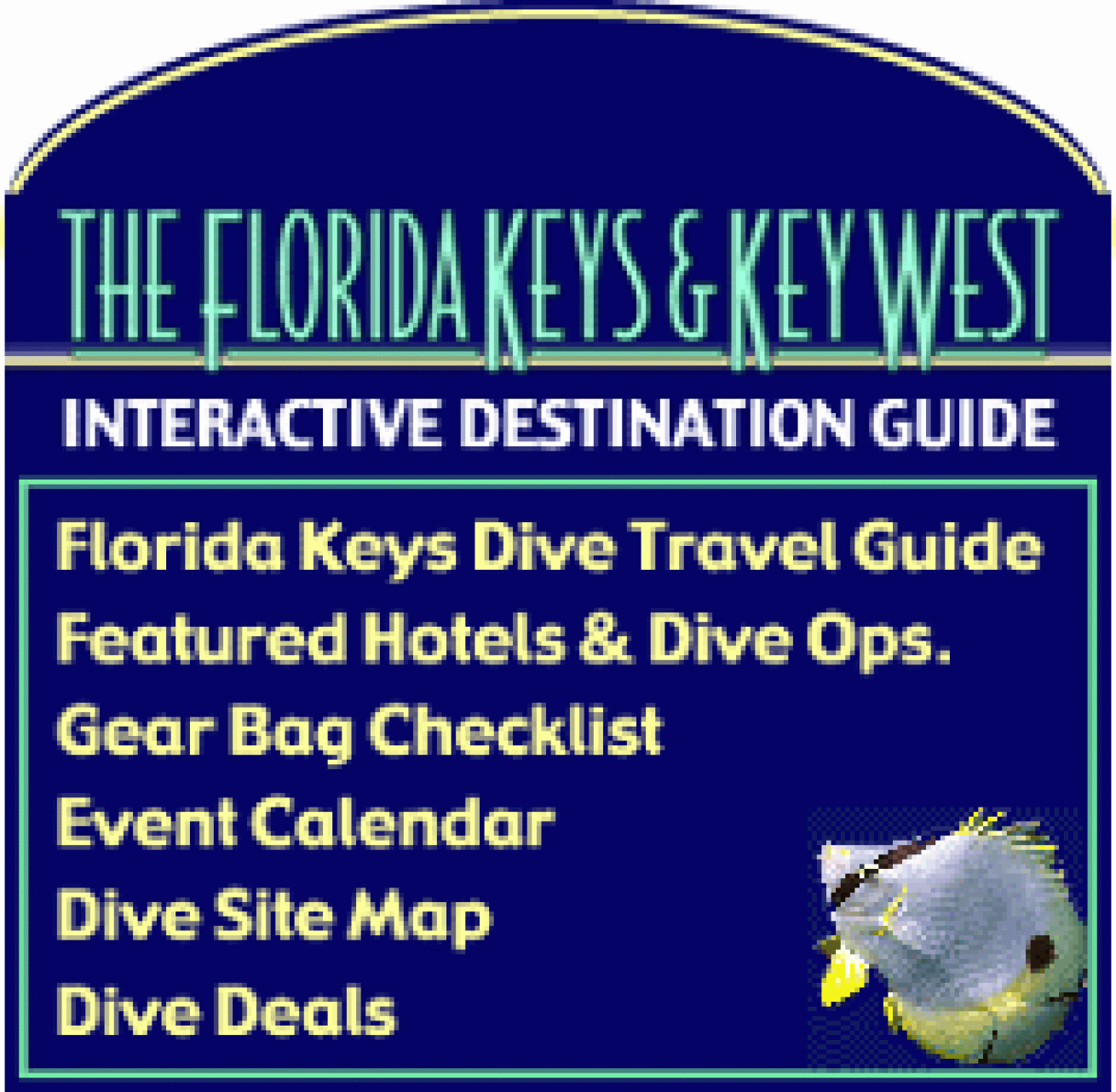
UPPER KEYS | MIDDLE KEYS | LOWER KEYS
Destination Snapshot
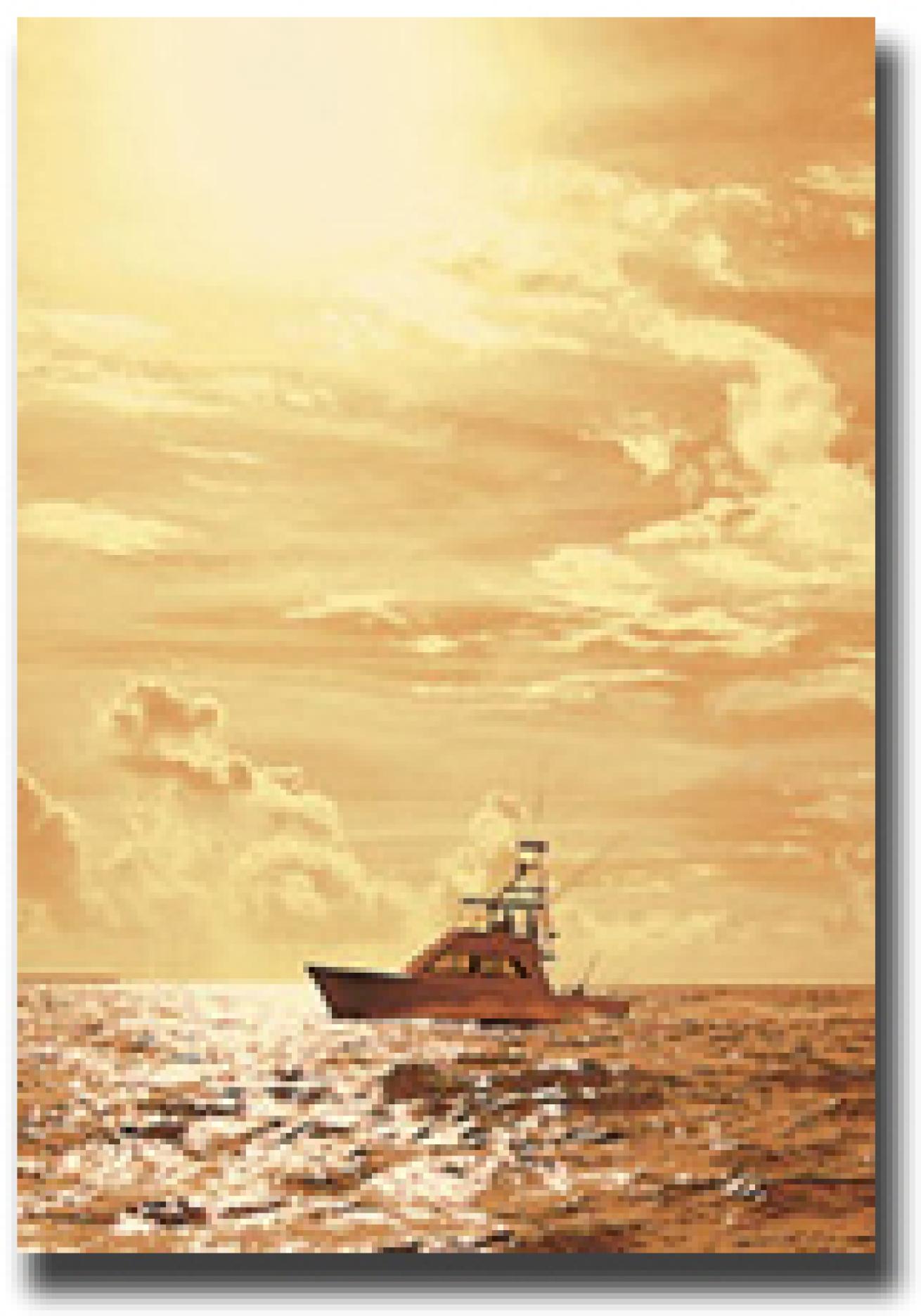
Water Conditions: Diving is year-round. The best conditions are from May to September, with relatively calm seas and good vis--except during tropical storms and hurricanes. For the latest dive conditions, check the National Oceanic and Atmospheric Administration's (NOAA) buoy reports at http://www.ndbc.noaa.gov/.
Visibility: On clear days, visibility soars to 120 feet, but averages are closer to 60 to 80 feet. Winter storms can stir up chop, and along the shallow reefs visibility can drop to 30 feet or less, but when the storms pass, visibility can improve with just a couple of tidal shifts.
Water Temperatures: Range from the 70Fs in mid-winter to 80Fs in summer.
Reef Report: Two reef structures are found throughout the Keys. Shallow patch reefs start about one mile from shore and are dominated by sea fans and soft corals. Between three and eight miles offshore are the spur-and-groove formations of the fringing coral reef that draw most divers. Most of the commonly dived reef sites rarely exceed 40 feet in depth, with clusters of brain, star, pillar and elkhorn coral rising 10 to 15 feet from the bottom. Some deeper portions of the outer reef, however, feature mini-walls that drop off to 80 to 100 feet.
Marine Life: There are more than 600 varieties of fish in Keys waters. Many of the reefs are literally crawling with spiny lobster and crabs, and it's not uncommon for divers to encounter stingrays, nurse sharks and spotted and green moray eels.
The Upper Keys: Key Largo, Tavernier and Islamorada
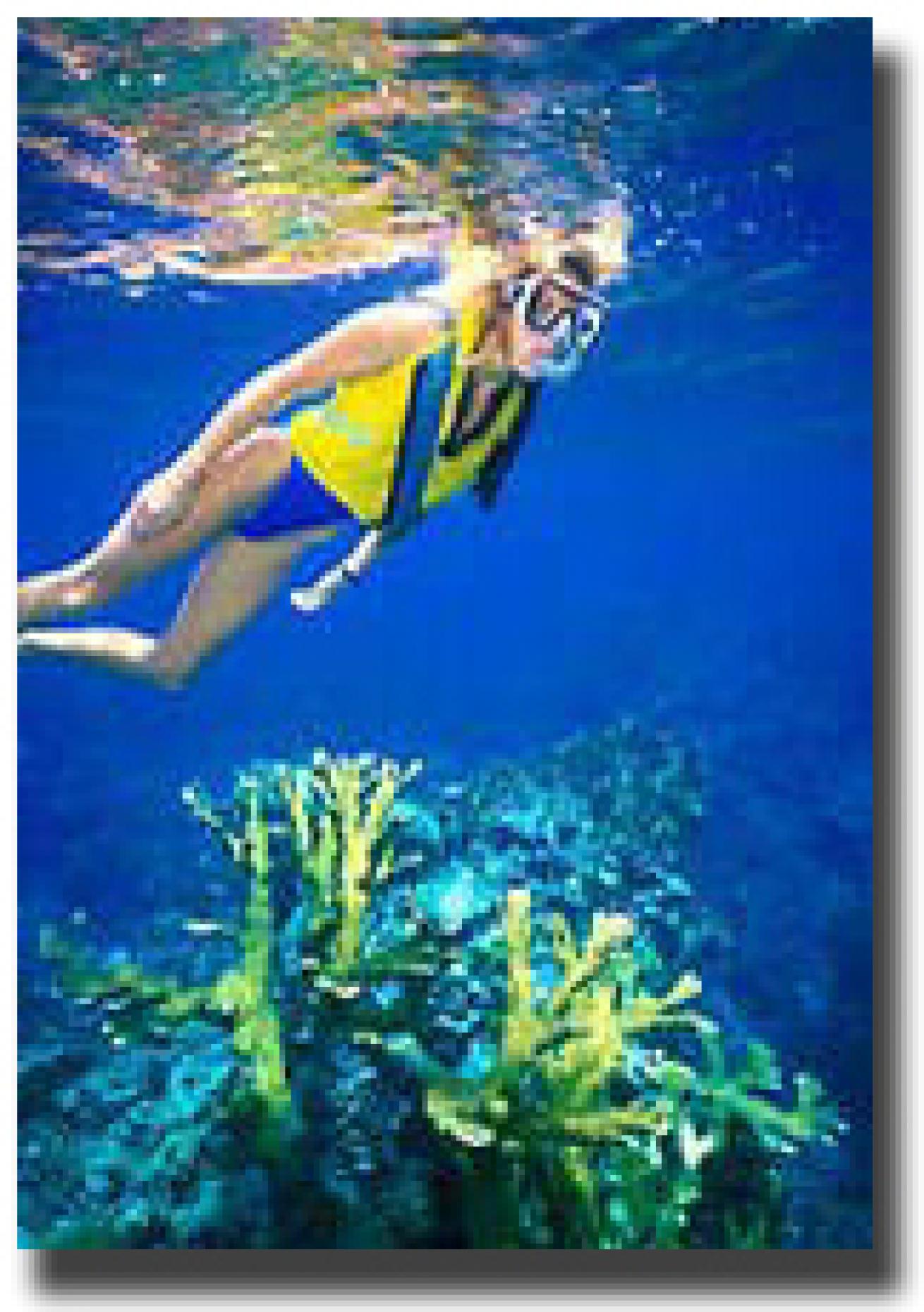
On any road trip through the Keys, you'll hit the mother lode of diving not far south of Miami's urban sprawl. Key Largo, the largest island in the chain, claims to be the "Dive Capital of the World," and it's home to some of the most famous reefs in the United States--Elbow, Molasses, Carysfort and French reefs. The combination of proximity to the cleansing waters of the Gulf Stream and the mass of this island serve to obstruct the pass-through of the turbid waters of Florida Bay and ensure consistently stellar water clarity.
The Coast Guard Cutters Duane and Bibb, sunk off Key Largo in the late 1980s, also make Key Largo and neighboring Tavernier a premier wreck diving destination. The Upper Keys will become an even greater wreck diving destination with the addition of the 510-foot Spiegel Grove--one of the largest U.S. artificial reefs ever sunk solely for divers. As this issue went to press, a Virginia shipyard was still cleaning and preparing the ship. Watch for the arrival of this world-class wreck dive in December.
Plantation, Windley and the Matecumbe Keys are collectively called Islamorada, but are better known as the "Sportfishing Capital of the World." For the same reason anglers (mostly catch-and-release these days) revere Islamorada, sport divers do too--fish. Lots of fish. There's plenty of great diving on Alligator, Crocker and Davis reefs as well as the wreck of the Eagle freighter. Islamorada is also one of the best places to be for lobstering during the season, which runs from August to March.
Reader Comments
Key Largo
"Very good diving and you get your money's worth."
- N.S., Westfield, Mass., May '00.
"I thought the reef was beautiful and well-protected. There was a plethora of marine life on the reef."
- J.S., Orlando, Fla., Sept. '00.
Islamorada
"Islamorada is a great value for the dollar."
- A.B., Stow, Mass., March '00.
"They've got a little bit of everything. I especially like the wreck diving, but there is also a lot of good reef diving."
- E.W., Clearwater, Fla., July '00.
Middle Keys: Marathon
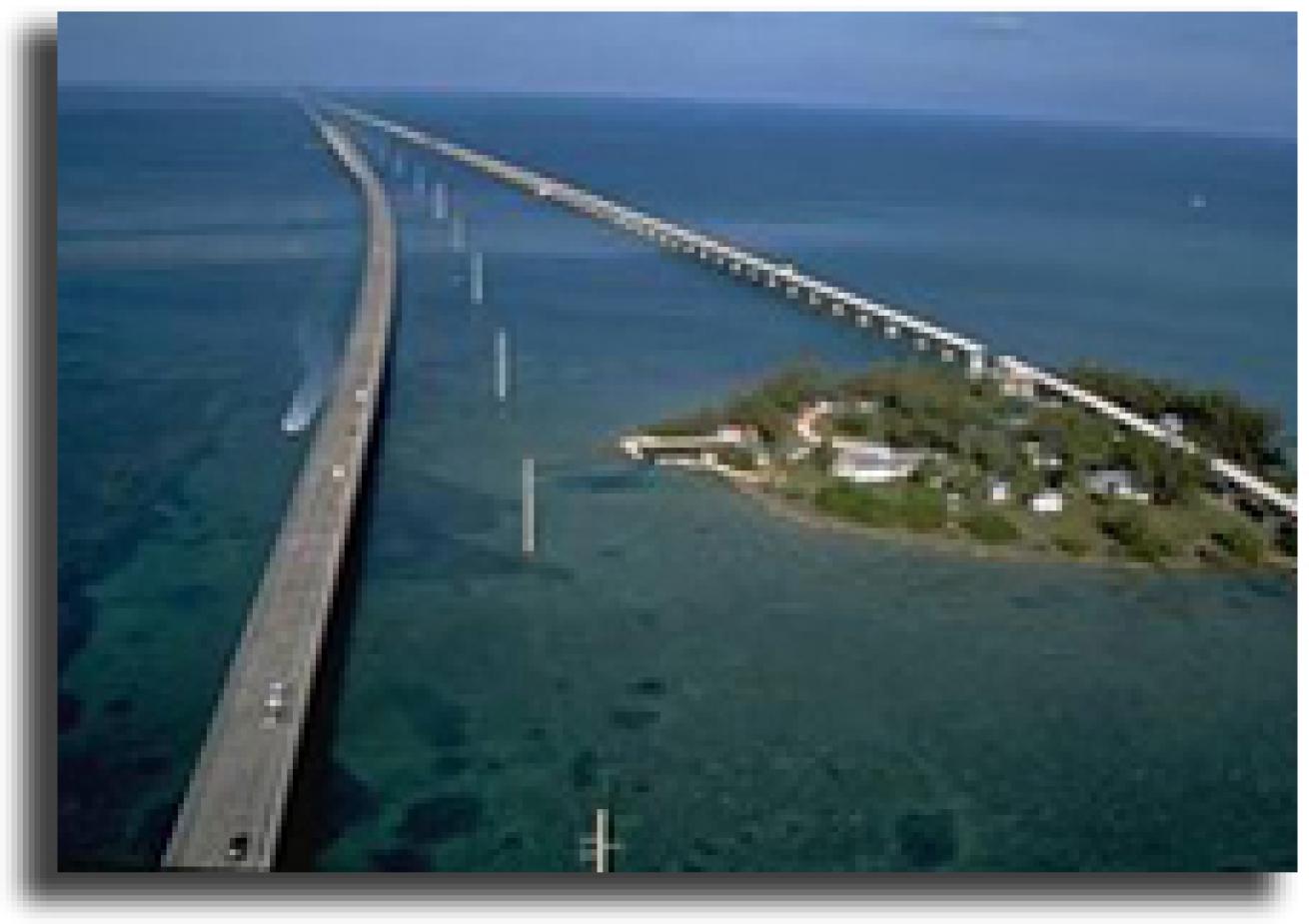
At Mile Marker #66, you hit a string of small islands culminating in Vaca Key, and the town of Marathon--the physical and operational center of the islands. It also happens to be a great jumping-off point for some excellent diving as well.
The reefs here are exposed to more of the nutrient-rich water that flows from the Gulf of Mexico, and the vis may suffer a little at times. But at high tide you can count on 50 to 60 feet of visibility. Much of the diving centers around Sombrero Reef, a hat-shaped dome topped by a light tower. You can also explore fingers of coral on Delta Shoals and Coffins Patch, interact with friendly nurse sharks at Samantha's Reef, and experience the ever-popular Thunderbolt shipwreck. The Sanctuary Preservation Areas throughout the Florida Keys offer some of the best marine life in this hemisphere, and off Marathon both Coffins Patch and Sombrero Reef are SPAs. If you haven't dived these reefs in a few years you'll be amazed at not only the sheer quantity of fish, but also how friendly they've become now that they are no longer in jeopardy from spearfishing or hook-and-line angling.
Reader Comments
Marathon
"Thumbs up! The diving was excellent and there were lots of big fish and lobster."
- R.R., Cleveland, Ohio, Aug. '00.
"Good diving for beginners, excellent photo opportunities and lots of fish."
- P.S., Dallas, Texas, June '00.
_"Marathon diving is the best-kept secret in the Florida Keys."
_ - M.B., Carroll, Ohio, July '00.
Lower Keys: Looe Key to Key West
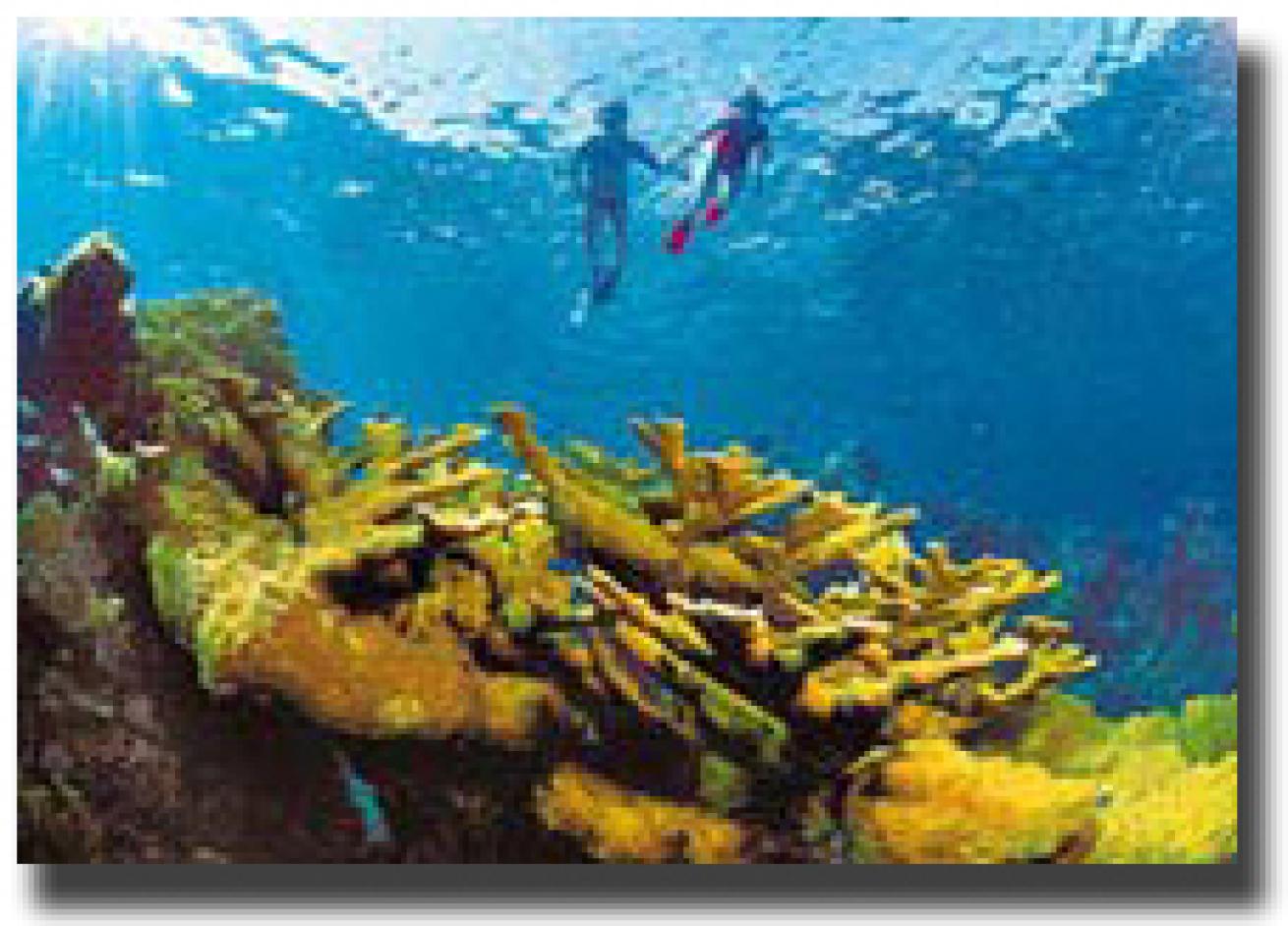
Crossing the Seven Mile Bridge affords one of the most scenic vistas of the whole trip, and at its southern end, the bridge deposits you on Long Key. From here, you'll be island-hopping through the Torch Keys, Big Pine Key and onward to Key West. But slow down here, for there are some fascinating stops to make along the way, from viewing the rare and endangered Key deer to the immaculate reefs off Looe Key.
This protected five-square-mile reef is a series of well-defined coral grooves stocked with life from crabs to free-swimming morays to nurse sharks. Shipwreck enthusiasts will love the Adolphus Busch, Sr., a retired freighter that rests perfectly upright in just 100 feet of water. In the few years the Busch has been on the bottom, she has transformed from a derelict freighter to a virtual fish magnet, with massive schools of tomtate grunts, horse-eye jacks and barracuda. But the stars of this undersea circus are the three resident jewfish commonly sighted.
And finally, there is legendary Key West--where diving is almost as popular as any and all forms of sun-drenched hedonism. Key West has its own spur-and-groove reefs with abundant coral and plentiful marine life at sites like Nine-Foot Stake, Lost Reef, Western Dry Rocks and the Sambos (Eastern, Western and Middle). There are two prime shipwrecks in Key West: the Cayman Salvage Master, a 187-foot Coast Guard buoy tender sunk in April of 1985; and the 75-foot vessel dubbed Joe's Tug. Coming soon will be the Vandenberg, a 520-foot behemoth of a ship that will make a stunning artificial reef, eclipsing even Key Largo's massive Spiegel Grove by 10 feet.
Reader Comments
Looe Key
"Easy diving and great visibility. We enjoyed seeing lots of smaller sea life, as well as spotted eagle rays, tarpon, nurse sharks, gray reef sharks, two large southern stingrays and a jewfish."
- S.W., Southgate, Mich., July '00.
"Great diving for beginners. You can stay down for hours on one tank."
- R.F., Merrick, N.Y., July '00.
Key West
"I was pleasantly surprised at the abundance of marine life."
- C.P., Summit, N.J., Feb. '00.
"Great for shallow dives, and Key West is a blast topside."
- A.B., Aurora, Ill., July '00.

